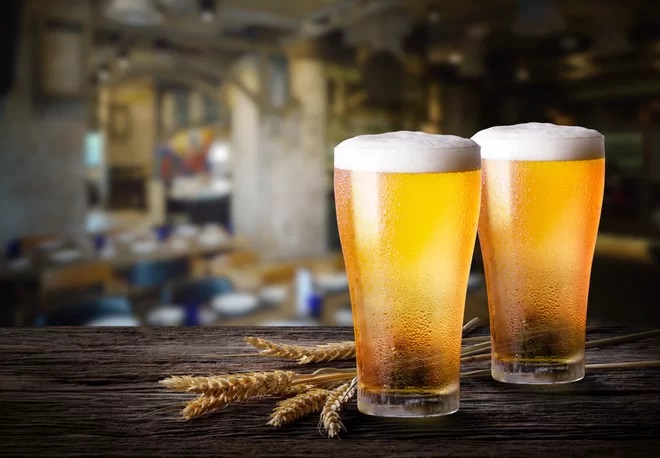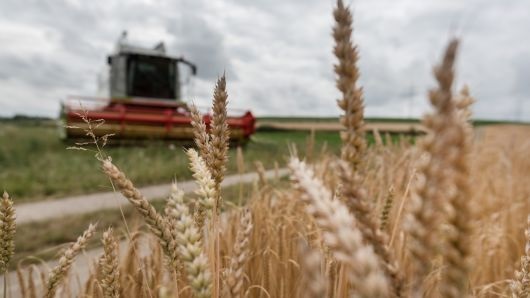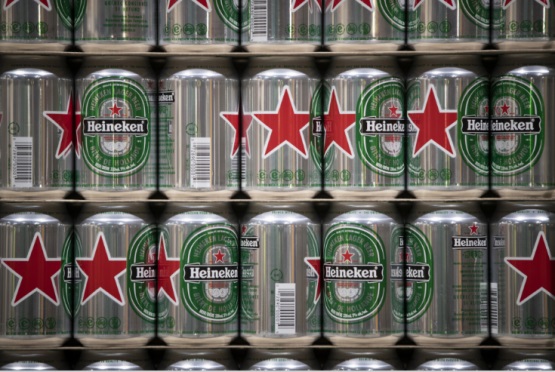Climate changes pose a threat to increase in beer prices
By Lana Mann
 
气候变化对啤酒价格上涨构成威胁
啤酒饮用者可能会在未来几天为同等数量的啤酒支付更多费用。 最近的一项研究表明,到本世纪下半叶,发芽大麦的产量可能会急剧下降,从而导致大麦成本飙升,这是制备酒精饮料的重要成分。
预计在种植谷物的地区,干旱和热浪会变得更加强烈和频繁。 气候变化不仅仅会影响到第三世界国家,而且它会在未来几年为啤酒消费者带来麻烦,因为它会降低大麦的产量。 根据每个地区的情况,预计全球大麦的平均产量将下降3%至17%。 这将暂时每两到三年发生一次。
现在成本最高的国家,例如澳大利亚和日本,并不是真正意义上的未来价值最大化的国家。 一个国家的啤酒成本的变化确定了购物者的能力。在英国,啤酒消费可能会下降0.37亿至13.3亿升,而成本则可能高达两倍。 美国可能会减少10.8亿至34.8亿升。
 Beer drinkers might be paying more for the same quantity of beer in the coming days. A recent study suggests that the yield of malted barley might drastically reduce towards the second half of the century, hence causing a spike in the cost of barley, a vital ingredient in the preparation of the alcoholic drink.
Beer drinkers might be paying more for the same quantity of beer in the coming days. A recent study suggests that the yield of malted barley might drastically reduce towards the second half of the century, hence causing a spike in the cost of barley, a vital ingredient in the preparation of the alcoholic drink.
It is expected that droughts and heat waves would become more intense and more frequent in regions that grow the grain. Climate change is not just going to affect the third-world countries alone, but it will brew trouble for beer consumers in years ahead, as it reduces the yield of barley. The average global yield of barley is expected to drop between 3% and 17%, depending on the condition of each region. This would tentatively occur once in every two or three years.
Leading beer-consuming nations, like Ireland, could anticipate a double or even a triple in beer prices, and farmers from other nations might be forced to export barley to countries that would struggle to grow the grain under hotter and drier conditions. Less barley would mean higher prices for these nations.
According to a research conducted by a team of researchers from the U.S, U.K, and China, the price of beer is “not the most concerning impact of climate change.” Heat events and extensive droughts are projected to occur every three years under high-warming climate scenarios. These scenarios vary with regions, and with Earth’s shifting climate, the effects vary as much as the scenarios.
Regional scenarios
 Under the hottest climate, China will suffer the most shortages (of barley) in the century. Ireland, the U.S, Germany, and Russia would also be greatly affected. Prices in Ireland could spike from a $2.5 for a pint of alcohol to $5.0, depicting a double in the price. Consumers in the UK would be compelled to reduce their utilization by 25% out of the most pessimistic scenario environmental change situation, and in the US, 14% less jugs would be opened.
Under the hottest climate, China will suffer the most shortages (of barley) in the century. Ireland, the U.S, Germany, and Russia would also be greatly affected. Prices in Ireland could spike from a $2.5 for a pint of alcohol to $5.0, depicting a double in the price. Consumers in the UK would be compelled to reduce their utilization by 25% out of the most pessimistic scenario environmental change situation, and in the US, 14% less jugs would be opened.
Utilization in China - the world's greatest brew drinking country - would fall by 9%. Poland, then, would confront the greatest check-ups on pints in the most noticeably awful environmental change conditions, with costs expanding by 500%.
Amid the most serious atmosphere occasions, the outcomes show that worldwide brew utilization would decrease by 16%, or 29 billion litres - generally equivalent to the aggregate yearly lager utilization in the US - and that lager costs would all things considered twofold. Indeed, even in less serious outrageous occasions, lager utilization drops by 4% and costs ascend by 15%.
 n the UK, lager utilization could fall by between 0.37 billion and 1.33 billion litres, while the cost could as much as twofold. Utilization in the US could diminish by between 1.08 billion and 3.48 billion litres.
n the UK, lager utilization could fall by between 0.37 billion and 1.33 billion litres, while the cost could as much as twofold. Utilization in the US could diminish by between 1.08 billion and 3.48 billion litres.
A few nations with less aggregate lager utilization confront colossal decreases in their brew utilization: the volume of lager devoured in Argentina falls by 0.53 billion litres, equal to a 32% decrease, amid more serious atmosphere occasions. Indeed, even at all extreme atmosphere occasions, add up to brew utilization in Argentina and Canada diminishes by 0.27 billion litres (16%) and 0.22 billion litres (11%) individually.
Nations where lager is right now most costly, for instance Australia and Japan, are not really where future value stuns will be the best. Changes in the cost of lager in a nation identifies with shoppers' capacity and readiness to pay more for brew as opposed to expend less, to such an extent that the biggest cost increments are moved in generally well-off and truly lager adoring nations.
 While most of the world's grain is utilized to nourish domesticated animals, the scientists trust lager will be more influenced, as governments are probably going to organize keeping creatures bolstered when grain is hard to come by.
While most of the world's grain is utilized to nourish domesticated animals, the scientists trust lager will be more influenced, as governments are probably going to organize keeping creatures bolstered when grain is hard to come by.
Prof Dabo Guan at the University of East Anglia, one of the scientists who led the research, stated, between the expanded surges, cataclysmic events and nourishment deficiencies, a substantial number of individuals could confront because of environmental change, costly lager may appear "insignificant."
In any case, a lack of beer could lastingly affect the personal satisfaction of many. There is, Guan stated, "something basic in the culturally diverse valuation for lager."
"There is little uncertainty that, for many individuals, around the globe, the atmosphere effects of brew will compound an already painful situation."
The examination did not consider environmental change's effects on other staple elements of brew, for example, bounces.
 Buyers in created nations, who need to keep away from deficiencies, would be savvy to help approaches lessening emanations of gases researchers fault for warming the planet, Guan said.
Buyers in created nations, who need to keep away from deficiencies, would be savvy to help approaches lessening emanations of gases researchers fault for warming the planet, Guan said.
A year ago U.S. President Donald Trump reported his goal to haul the United States out of the 2015 Paris settlement on atmosphere, questioning the degree to which human action is warming the planet.
Numerous organizations understand the dangers of atmosphere on grain, 17% of which is utilized to make lager. Numerous nations keep crisis stores of staple yields, for example, corn, rice and wheat to fight off value spikes and deficiencies. Be that as it may, most don't do as such for grain, making it powerless against atmosphere.
Anheuser-Busch, the universe’s greatest brewer, said for the current year it would cut its ozone harming substance outflows by a quarter by 2025.
Jess Newman, the head of U.S. agronomy for Anheuser-Busch, said the organization was trying different things with creating dry season safe grain and working with ranchers to decrease their requirement for water by, for instance, urging them to put water system sprinklers closer to the ground.
"It's unquestionably an incremental procedure, yet we have numerous assortments in the pipeline," Newman said, when asked how shut the organization was to rearing a dry spell safe grain in the United States. For quite a while, Anheuser-Busch has utilized a winter grain in Idaho that gets dampness from liquefying snow, cutting the requirement for water system.